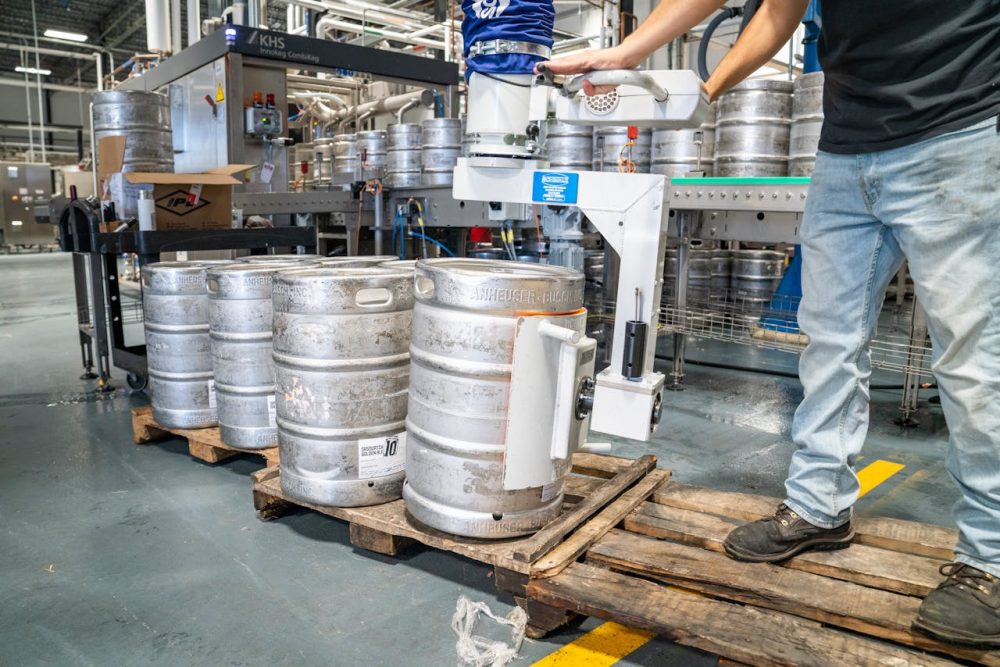Relocating a factory is a complex and often costly endeavour. Whether a business is moving to expand operations, reduce costs, or enter a new market, relocating a factory involves numerous factors and financial considerations. In this article, we will break down the typical costs of relocating a factory, including hidden expenses, and offer tips on optimising your relocation budget.
- Planning and Initial Consultation Costs
The first stage of any factory relocation is thorough planning and consultation. This phase involves assessing the business’s needs, selecting the new location, and planning the logistics of the move. Engaging with relocation consultants, legal advisors, and project managers can add to the overall costs. These professionals will help guide the decision-making process, ensuring the new factory location aligns with business goals, complies with local regulations, and optimises operational efficiency.
Principal Costs:
- Consulting fees for project management and logistics specialists.
- Legal fees for contract review and compliance with local laws.
- Costs for feasibility studies and location assessments.
- Real Estate Costs
Securing new premises is one of the largest expenses involved in a factory relocation. Whether you’re buying or leasing, the cost of real estate will vary depending on the location, the size of the factory, and the local market. It’s crucial to factor in not only the price of the building but also additional costs related to the property.
Principal Costs:
- Property purchase or lease: This is often the largest cost in the relocation process.
- Deposit and upfront payments: A security deposit and advance rent payments may be required if leasing.
- Property taxes can vary significantly depending on the region and property type.
- Insurance: Factory insurance premiums can increase in new locations, depending on the local risks, such as natural disasters or crime rates.
- Renovation and Facility Setup
Once the new property has been secured, the next significant expense is the cost of setting up the facility to meet operational needs. This includes renovations, utility installation, equipment upgrades, and ensuring the new site meets health and safety standards. Depending on the condition of the building, you may need to invest in structural changes, electrical upgrades, or even changes to the layout to optimise workflow.
Principal Costs:
- Renovation and construction: Modifying the factory for your specific production needs is costly.
- Utility connections: Installation of electricity, water, gas, internet, and other essential services.
- Health and safety compliance: Ensuring the new facility meets all regulatory requirements, including fire safety, air quality, and accessibility.
- Moving Equipment and Machinery
One of the most critical aspects of the relocation process is transporting heavy machinery, production equipment, and inventory to the new factory location. Moving costs can vary greatly depending on the equipment’s distance, size, and fragility. For large factories, this may also involve the disassembly and reassembly of complex machinery, which adds to the labour and logistics costs.
Principal Costs:
- Transport costs include shipping, trucking, or airlifting machinery and inventory.
- Disassembly and reassembly: The cost of hiring professionals to disassemble, transport, and reassemble large or delicate equipment.
- Storage costs: If there is a gap between the move and when production can resume, you may need to rent storage facilities for equipment and inventory.
- Employee Relocation and Staffing Costs
Relocating a factory often involves moving staff or hiring new workers to operate in the new location. Employee relocation can incur additional expenses, particularly if staff must relocate with their families or if the new location is far from the original site. It’s also important to consider potential disruptions to production during the transition period, which could lead to additional hiring costs or temporary reductions in workforce efficiency.
Principal Costs:
- Employee relocation packages: Assistance with moving costs, accommodation, and settling-in support.
- Temporary staffing: Hiring temporary workers to cover gaps or shortages during the move.
- Training and onboarding: New staff or relocated employees may require training to adapt to the new site or factory layout.
- Operational Downtime
One of the hidden costs of factory relocation is the inevitable downtime during the transition. Moving equipment, setting up the new facility, and training staff can result in delays or a temporary halt in production. This loss of productivity can lead to a decrease in revenue and an increase in costs as you work to get the new factory operational.
Principal Costs:
- Production delays: The time required to resume normal operations after the move.
- Loss of revenue: Potential income lost due to disruptions in manufacturing.
- Customer dissatisfaction: Late deliveries or product shortages may affect customer satisfaction and brand reputation.
- Legal and Regulatory Compliance
Every country or region has its own set of regulations regarding factory operations, and relocating to a new area may require compliance with additional laws. This could involve registering your business, ensuring compliance with local environmental laws, and obtaining necessary permits for your new site. Legal fees can accumulate quickly, especially if the new location has complex regulatory requirements.
Principal Costs:
- Legal fees are the costs associated with reviewing contracts, setting up the new facility, and ensuring compliance with local regulations.
- Permits and licences: Obtaining necessary permits for construction, operation, and environmental compliance.
- Tax implications: Changes in local tax rates or incentives that could impact your overall financial position.
- Hidden Costs and Contingencies
Finally, it’s important to plan for hidden costs and unexpected contingencies. No matter how well-planned the relocation is, unforeseen challenges can arise, from delays in construction to higher-than-expected moving costs. Setting aside a contingency budget to account for these potential issues is wise, ensuring the relocation goes smoothly without derailing the overall financial plan.
Principal Costs:
- Unexpected repairs: Costs related to unforeseen issues with the building or equipment.
- Unforeseen legal or regulatory challenges: Potential issues with zoning, building codes, or local ordinances.
- Contingency fund: A reserve to cover any surprise costs that arise during the relocation process.
Reducing Relocation Expenses
Careful planning and management are essential to minimise costs and optimise the relocation budget. Here are a few strategies:
- Plan ahead: Start early to avoid last-minute rushes that could lead to higher costs.
- Negotiate deals: Negotiate better deals for property leases, equipment transport, and contractor services.
- Hire experienced professionals: Work with experts with factory relocation experience to avoid costly mistakes.
- Use technology: Implement project management software to track costs, timelines, and tasks to keep everything on budget.
Factory relocation is an expensive and complex process, but with proper planning, it can be executed efficiently. Understanding the key costs involved—from real estate and renovation to equipment transport and staffing—will help you better manage the financial aspects of the move. By anticipating hidden costs and optimising your budget, you can ensure the relocation is as cost-effective as possible without sacrificing quality or productivity.





